The topic of conversion optimization often revolves around the call to action, with recommendations for improving conversions pointing to variations in shape, size, color, placement on page, copy, etc.
That said, one factor that's often neglected – with sometimes dire consequences – is the relevance of the call to action to the stage of the sales funnel, or what point your audience is at in the buyer's journey.
When your call to action doesn't match the intent of your audience, you're going to see a sharp decline or limited lift in conversions for a given piece of content or landing page.
The Basics of the Call to Action
The call to action (CTA) is an instruction you give to your audience to provoke an immediate response and get them to take action.
That action can be a lot of things: a request to download an eBook, opt-in to an email list, sign up for a webinar, register for an event, purchase a product, take a live demo/product tour, read another article, share, comment, etc.
In some cases marketers will utilize multiple calls to action; however, best-practices state that it's best to only use one call to action to eliminate the paradox of choice. This focuses the audience on that single action you want them to take, rather than split their attention.
Not all CTAs are created equal; it's not enough to just slap a brightly colored “click here” button throughout your funnel. Not only are various elements crucial to the effectiveness of a call to action, but the performance of your CTAs will vary based on their placement throughout the buyer's journey.
Here's some generic CTAs turned better by focusing on benefits the visitor gets by clicking the CTA:
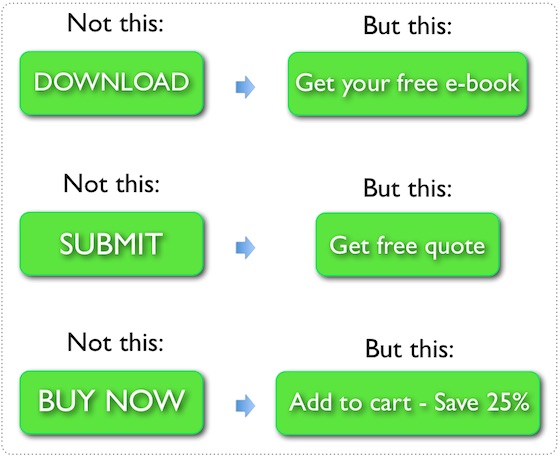
A CTA can be placed virtually anywhere in and around your content, but your call to action can't just be placed haphazardly in your sales funnel.
Crafting an Effective Call to Action
Creating an effective call to action starts with the little details. It's easy to create a call to action, but it's far harder to create a call to action that converts well.
Here are some of the most common components that play a part in getting a conversion lift during CTA creation and A/B testing.
The Design
In order for someone to click on a call to action, they first need to see it. Eye-catching designs are helpful, and this is one point where it's OK to step outside of your brand's style guide. You want colors that contrast with the rest of your content and that are large enough to stand out over everything else.
The copy
You can't just tell someone to “click” or “submit.” Your copy should use power words and actionable verbs, often personalized (“you”, “your”, “my”) to have the most impact. Here's a guide to writing CTAs.
The value proposition
Make sure your audience knows exactly what they're getting when they click. Your call to action should be explicitly clear about what comes next, or about what they're getting in exchange for taking an action.
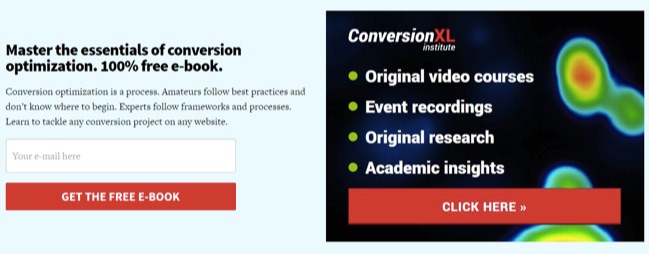
Placement in the funnel
A CTA is most effective when it's wholly relevant to the content it's placed in, as well as the user's intent. As such, it's best if it delivers the user to a dedicated landing page relevant to the stage of the buyer's journey, rather than a random website page.
For example, a CTA to a Contact Us page won't be as effective in gathering leads as a CTA that drives the reader to a landing page for a free download.
Likewise, you'd never create a call to action for a product demo (a bottom of the funnel CTA) at the bottom of a blog post when that blog post is providing top of the funnel content meant to drive awareness.
Hitting on all of these components is a critical part of a well-performing call to action. To simplify it, you can break any call to action down into two key concepts – Value and Relevance:
- The copy of your CTA conveys value and relevance
- The position of your CTA within the sales funnel reinforces relevance
Fitting your CTA to the Stages of the Sales Funnel
While most funnels will come in three stages, no two funnels are the same. The buyer's journey changes depending on your audience, the product or service, the industry, etc.
Some funnels are very short (B2C online retailers for example) while others are much longer. For example, an enterprise level SaaS like Salesforce isn't a quick purchase. There's often a much longer period of awareness and evaluation before a purchase is made.
Let's take a look at a typical funnel and the types of content and calls to action at each stage:
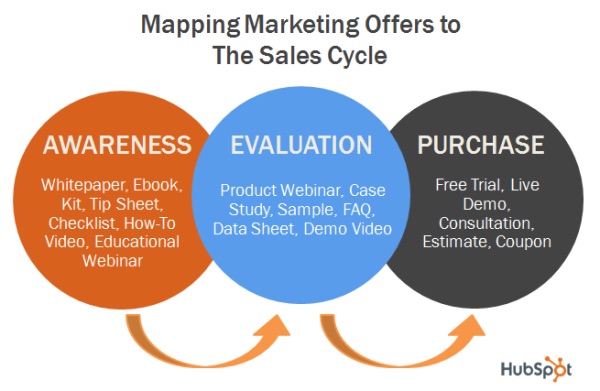
Top of the Funnel
The top of the funnel is the awareness stage. You're not here to push or promote any specific product or service. Instead you're offering a broad range of knowledge intended to educate your audience.
They're looking for answers – sometimes specific, sometimes not so specific. Your job is to create content at this stage that captures their attention and provides them with answers.
At this early evaluation stage, marketers typically use long form blog content to grab referral and organic traffic and introduce a brand to the audience. Other types of content at this stage include:
- eBooks and white papers
- Reports
- Infographics
Companies often put a great deal of their marketing efforts into producing a lot of top of the funnel content. And that's a good idea – this type of content marketing can generate 3 times as many leads as traditional outbound marketing, but costs 62% less than traditional marketing efforts.
Blogs are often the most popular; 79% of companies with an active blog report a positive ROI.
At this stage, your call to action needs to focus the attention of the audience. They're not yet a qualified lead or customer, and you don't want to push promotional CTAs or you risk driving them away.
Instead use personalized calls to action that promote continued engagement. This can include:
- A CTA to drive engagement – “Share this post with your network” or “Leave a comment below with your thoughts”
- A CTA that gathers info – “Click to get your free eBook” or “Download your free local marketing checklist”
Check out this CTA that Hubspot places at the end of a blog post. It invites people to try out their new tool, with benefits-focused copy:
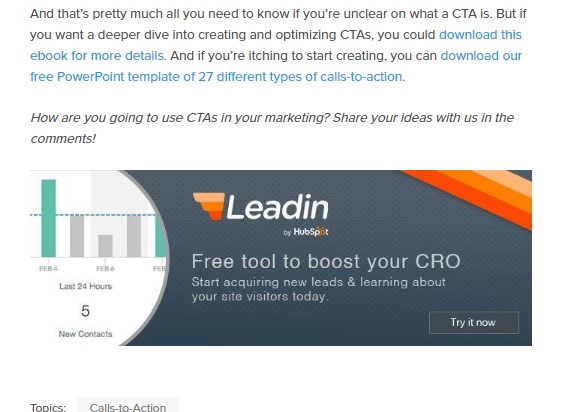
Remember that the focus here should be on education and continued engagement, with the goal of moving visitors to the middle of the funnel (the evaluation phase).
Middle of the Funnel
The middle of your sales funnel is also known as the evaluation phase. At this point, your audience is aware of your knowledge and offerings. They're committed to finding a solution, but they don't quite know what that is yet. For now, they're simply researching and trying to understand all of the options that are available for solving their problem.
Your goal here is to continue to educate them while also positioning your solutions as the ideal choice.
At this stage, it's not uncommon to use email marketing, segmented by audience and intent, to build a relationship with the audience. Other types of content for the evaluation stage include:
- Comparison white papers
- Expert guides
- Live interactions including webinars
Here's an example of a white paper offer from Zendesk:
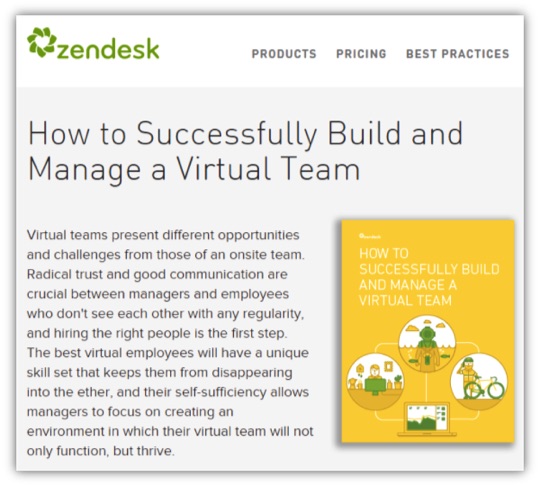
Calls to action in this phase are often extremely focused, with dedicated landing pages. HubSpot, for instance, increased subscribers by 128% in a 90 day period by using blog opt-in boxes on dedicated landing pages. Those CTAs can be made even more effective by narrowing the focus for your audience. As many as 16% of landing pages eliminate navigation to achieve this.
CTAs should focus on relevancy at this stage, highlighting the expert nature of educational information with a strong value proposition.
Here's a CTA shown to Kissmetrics highlighting the free case study they'll receive in exchange for an email address.
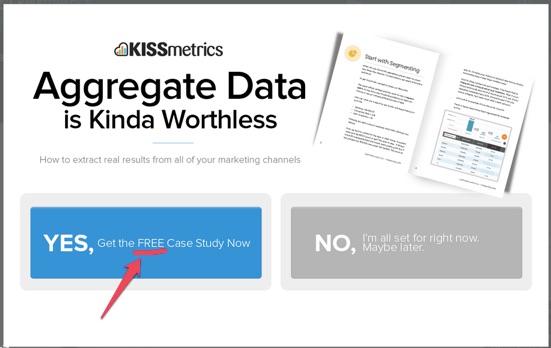
Bottom of the Funnel
Just because you've moved your audience to the bottom of the funnel into the purchase phase doesn't mean you're going to close the lead. They're certainly ready to buy, and you want to ensure that they buy from you – but it's far from guaranteed.
Hopefully, at this point, you've mapped content and CTAs to effectively guide your audience through the lead nurturing process. According to HubSpot, nurtured leads produce on average a 20% lift in sales vs non-nurtured leads. Further research from Forrester has shown that companies that excel at lead nurturing can generate up to 50% more sales leads at 33% lower cost.
At this phase, you want to leverage content that persuades your audience to make a purchase. This can include:
- Trial downloads
- Demos
- Infographics
- Product literature or buyer guides
- Further case studies
As a result, the most effective CTAs will be personalized based on relevancy and intent:
- “Get your membership access now”
- “Start your free trial today”
- “Request your free evaluation now”
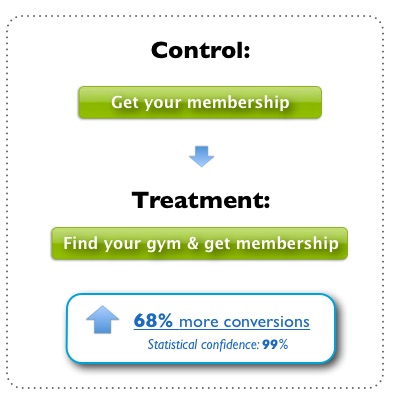
Conclusion
Creating an effective call to action goes beyond design and copy. It has everything to do with aligning your offer and CTA with your sales funnel to ensure it's relevant to the audience's intent.
Don't stop once your CTAs are mapped appropriately, though.
Setup follow-up content that moves the target back to the middle of the funnel with an appropriate CTA to keep them engaged. Maintain the marriage with the customer and turn them into a lead-generating brand ambassador, using CTAs to inspire them to spread the word.
Do you make CTA placement and creation part of your documented content marketing strategy? Share your approach to CTAs with me in the comments.
About the Author: Andrew Raso is the co-founder and director of Online Marketing Gurus, a fast-growing, award-winning search company working with brands including HelloMolly, Baku Swimwear, and Forcast. Follow him on Twitter at @andrewraso1 or on LinkedIn.
No comments:
Post a Comment